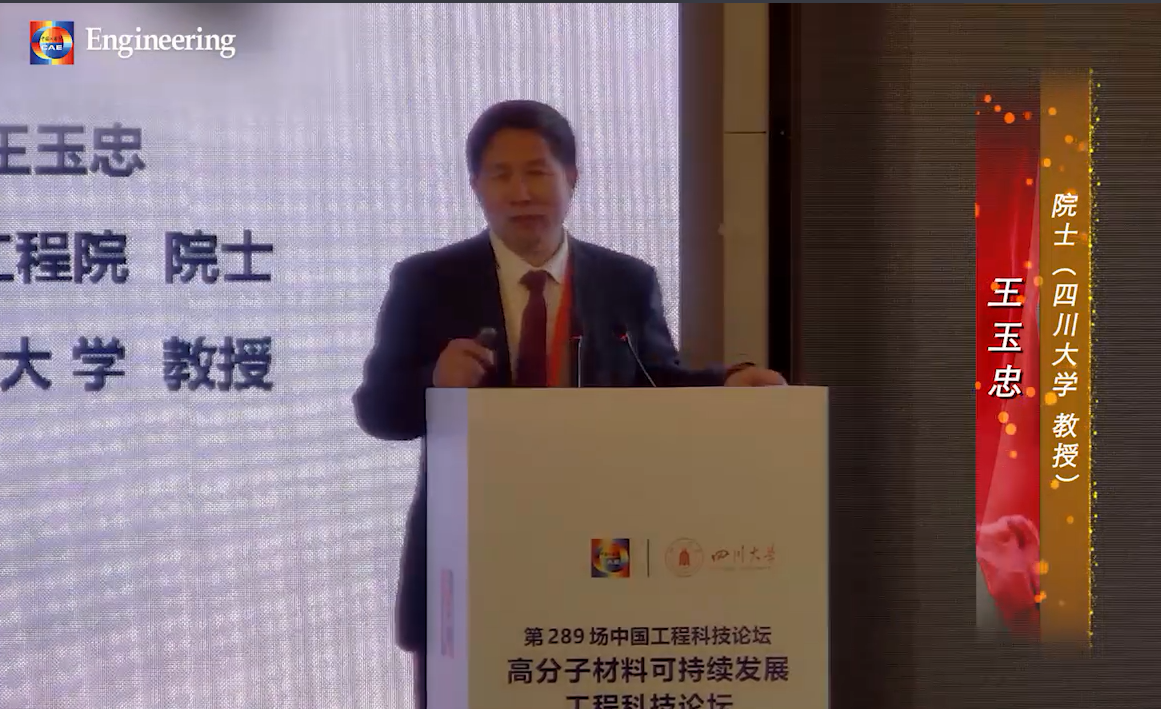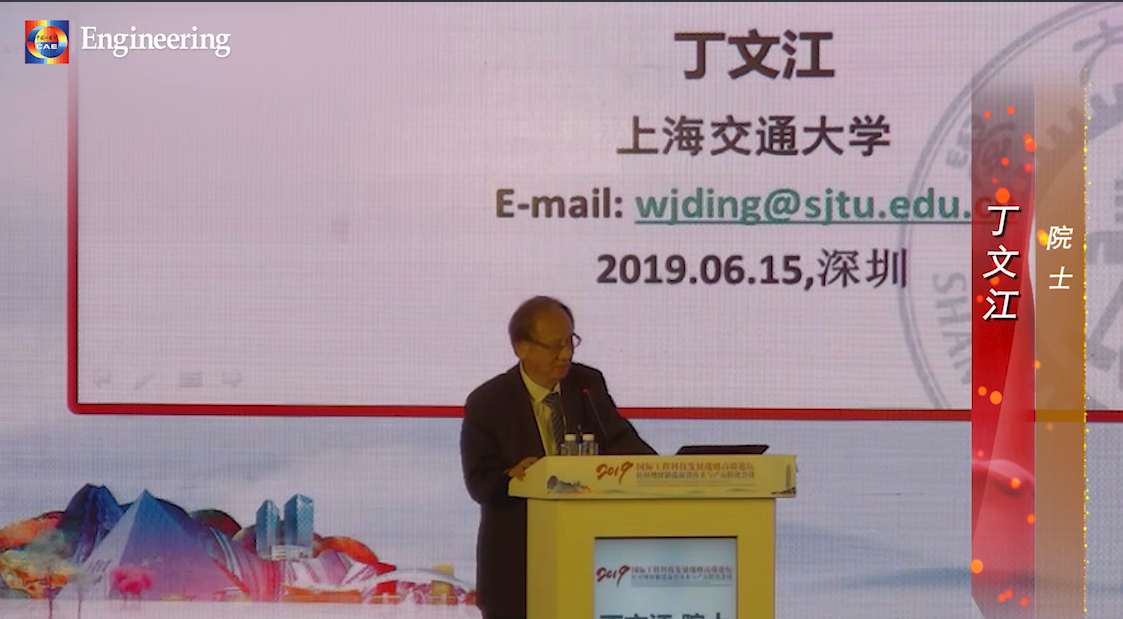检索范围:
排序: 展示方式:
Biodegradable, superhydrophobic walnut wood membrane for the separation of oil/water mixtures
《化学科学与工程前沿(英文)》 2022年 第16卷 第9期 页码 1377-1386 doi: 10.1007/s11705-022-2157-z
关键词: wood nanotechnology superhydrophobic biodegradable surface modification oil/water separation
《化学科学与工程前沿(英文)》 2023年 第17卷 第10期 页码 1544-1554 doi: 10.1007/s11705-022-2288-2
关键词: cellulose-based nanocomposite biodegradable antibacterial fabric nano-copper ions face masks
Micronization of curcumin with biodegradable polymer by supercritical anti-solvent using micro swirl
Kimthet Chhouk, Wahyudiono, Hideki Kanda, Shin-Ichro Kawasaki, Motonobu Goto
《化学科学与工程前沿(英文)》 2018年 第12卷 第1期 页码 184-193 doi: 10.1007/s11705-017-1678-3
关键词: micronization curcumin polyvinylpyrrolidone supercritical anti-solvent swirl mixer
Jiaojiao Shang, Guo Yao, Ronghui Guo, Wei Zheng, Long Gu, Jianwu Lan
《化学科学与工程前沿(英文)》 2018年 第12卷 第3期 页码 457-466 doi: 10.1007/s11705-018-1716-9
Biodegradable poly(ether-imide-ester) elastomers were synthesized from succinic acid, 1,4-butanediol, polyethylene glycol 1000 and N′,N-bis(2-carboxyethyl)-pyromellitimide which was derived from pyromellitic dianhydride and glycine. The chemical structures, crystallinities, thermal stabilities, mechanical properties, hydrophilicities and biodegradabilities of these elastomers were investigated. The hard segments of the linear aliphatic poly(ether-ester) exhibited monoclinic chain packing. Increasing the amount of aromatic bisimide moieties in the poly(ether-ester) reduced the crystallinity of the material and improved the thermal stability and tensile strength of the elastomers. In addition, introducing a suitable amount of aromatic bisimide moieties into the poly(ether-ester) backbones endowed the elastomers with improved biodegradability but too many aromatic bisimide groups reduced the biodegradability of the elastomers.
关键词: thermoplastic elastomers biodegradability thermo-stability mechanical property aromatic bisimide moiety
Biodegradable polymethacrylic acid grafted psyllium for controlled drug delivery systems
Ranvijay KUMAR, Kaushlendra SHARMA
《化学科学与工程前沿(英文)》 2013年 第7卷 第1期 页码 116-122 doi: 10.1007/s11705-013-1310-0
关键词: psyllium acetyl salicylic acid in-vitro drug release swelling biodegradation
增材制造可降解镁合金植入物面临的挑战及其对策 Article
王银川, 付彭怀, 王南清, 彭立明, 康斌, 曾晖, 袁广银, 丁文江
《工程(英文)》 2020年 第6卷 第11期 页码 1267-1275 doi: 10.1016/j.eng.2020.02.015
增材制造(AM)技术具有制备复杂几何结构的能力,为可降解金属植入物的制备提供了前所未有的机会,尤其对具有合适力学性能和良好生物相容性的可降解镁合金。然而,AM可降解镁基植入物面临着许多挑战,如镁粉制备困难以及AM过程中的粉体飞溅和裂纹形成。本文分析了AM可降解镁合金所面临的挑战,并提出了相应的应对策略,成功制备了一种表面光滑且圆整度好的新型镁合金(JDBM)粉体,然后对其AM参数进行了优化。在优化参数的基础上,采用选区激光熔化(SLM)技术制备了三种不同结构(仿生、金刚石和极小曲面)的JDBM多孔支架,并分析了其力学性能和降解行为。最后,筛选出性能最优的极小曲面支架进行透钙磷石(DCPD)涂层处理,该涂层极大地抑制了支架降解速率,并提高了其细胞相容性。AM镁合金支架展现了作为骨组织工程支架的临床应用前景。
Guanyi Chen,Jianyuan Li,Yunan Sun,Zhi Wang,Gary A. Leeke,Christian Moretti,Zhanjun Cheng,Yuan Wang,Ning Li,Lan Mu,Jinyu Li,Junyu Tao,Beibei Yan,Li´an Hou
《工程(英文)》 2024年 第32卷 第1期 页码 153-162 doi: 10.1016/j.eng.2023.10.002
In recent years, a great deal of attention has been focused on the environmental impact of plastics, including the carbon emissions related to plastics, which has promoted the application of biodegradable plastics. Countries worldwide have shown high interest in replacing traditional plastics with biodegradable plastics. However, no systematic comparison has been conducted on the carbon emissions of biodegradable versus traditional plastic products. This study evaluates the carbon emissions of traditional and biodegradable plastic products (BPPs) over four stages and briefly discusses environmental and economic perspectives. Four scenarios—namely, the traditional method, chemical recycling, industrial composting, and anaerobic digestion—are considered for the disposal of waste biodegradable plastic product (WBBPs). The analysis takes China as a case study. The results show that the carbon emissions of 1000 traditional plastic products (plastic bags, lunch boxes, cups, etc.) were 52.09–150.36 carbon emissions equivalent of per kg (kg CO2eq), with the stage of plastic production contributing 50.71%–50.77%. In comparison, 1000 similar BPPs topped out at 21.06–56.86 kg CO2eq, approximately 13.53%–62.19% lower than traditional plastic products. The difference was mainly at the stages of plastic production and waste disposal, and the BPPs showed significant carbon reduction potential at the raw material acquisition stage. Waste disposal plays an important role in environmental impact, and composting and anaerobic digestion are considered to be preferable disposal methods for WBBPs. However, the high cost of biodegradable plastics is a challenge for their widespread use. This study has important reference significance for the sustainable development of the biodegradable plastics industry.
关键词: Carbon emissions Biodegradable plastics Different disposal scenarios Daily life consumption Environmental and economic discussion
用于可持续电子器件的软物质材料研究进展 Review
Moon Jong Han, Dong Ki Yoon
《工程(英文)》 2021年 第7卷 第5期 页码 564-580 doi: 10.1016/j.eng.2021.02.010
在从传统化石燃料向可再生能源的转变中,生态友好材料因其可持续性和可生物降解性引起了研究人员的广泛兴趣。研究发现,在电子器件中应用可持续材料,可获得来自废弃生物资源的工业效益并起到保护环境的作用。本文综述了可持续材料用于有机电子元件(如基板、绝缘体、半导体和导体)的进展。希望本文能够引起人们对绿色和可持续工业材料及其实际应用的关注。
关绍康,朱世杰,郑玉峰,王云兵,张兴栋
《中国工程科学》 2023年 第25卷 第1期 页码 104-112 doi: 10.15302/J-SSCAE-2023.01.008
生物医用有色金属材料发展迅速,形成了适应不同体内环境、不同组织的医用有色金属材料及器件体系;着眼未来开展领域研究规划,提升新型医用有色金属材料及器件的临床应用水平,兼具理论研究与实践应用价值。本文论述了生物医用有色金属材料在耐蚀性、耐磨性、疲劳强度及韧性、生物适配性等方面的关键性能要求,系统梳理了永久性植入有色金属材料、生物可降解有色金属材料、多孔医用有色金属材料、医用有色金属表面改性等细分领域的研究进展、发展趋势与科学问题。在凝练各类生物医用有色金属材料未来研究方向的基础上,提出了加强基础与关键核心技术研究、组建“产学研医监”协同创新体、建立相关标准及规范、培育高精尖人才体系等发展建议,以期为新型材料发展布局与前沿技术研发提供先导性参考。
关键词: 生物医用有色金属材料;永久性植入有色金属材料;生物可降解有色金属材料;多孔医用有色金属材料;医用有色金属表面改性


标题 作者 时间 类型 操作
Nano-copper ions assembled cellulose-based composite with antibacterial activity for biodegradable personal
期刊论文
Micronization of curcumin with biodegradable polymer by supercritical anti-solvent using micro swirl
Kimthet Chhouk, Wahyudiono, Hideki Kanda, Shin-Ichro Kawasaki, Motonobu Goto
期刊论文
Synthesis and characterization of biodegradable thermoplastic elastomers derived from N′,N-bis (2-carboxyethyl
Jiaojiao Shang, Guo Yao, Ronghui Guo, Wei Zheng, Long Gu, Jianwu Lan
期刊论文
Biodegradable polymethacrylic acid grafted psyllium for controlled drug delivery systems
Ranvijay KUMAR, Kaushlendra SHARMA
期刊论文
可生物降解塑料取代传统塑料——对碳排放的影响
Guanyi Chen,Jianyuan Li,Yunan Sun,Zhi Wang,Gary A. Leeke,Christian Moretti,Zhanjun Cheng,Yuan Wang,Ning Li,Lan Mu,Jinyu Li,Junyu Tao,Beibei Yan,Li´an Hou
期刊论文
王玉忠:可反复循环的生物降解高分子材料(2019年5月6日)
王玉忠(院士)
2021年01月27日
会议视频
丁文江:可降解医用镁合金增材制造面临的机遇,挑战和对策(2019年6月15日)
丁文江(院士)
2021年01月20日
会议视频








